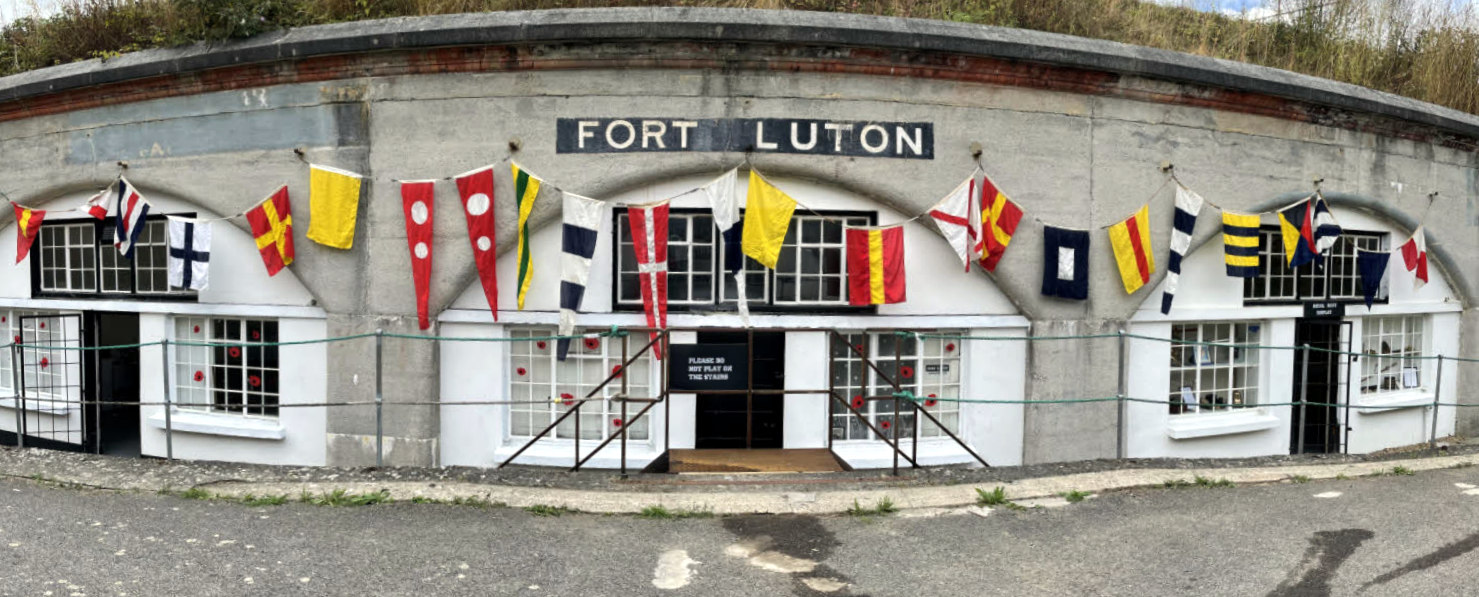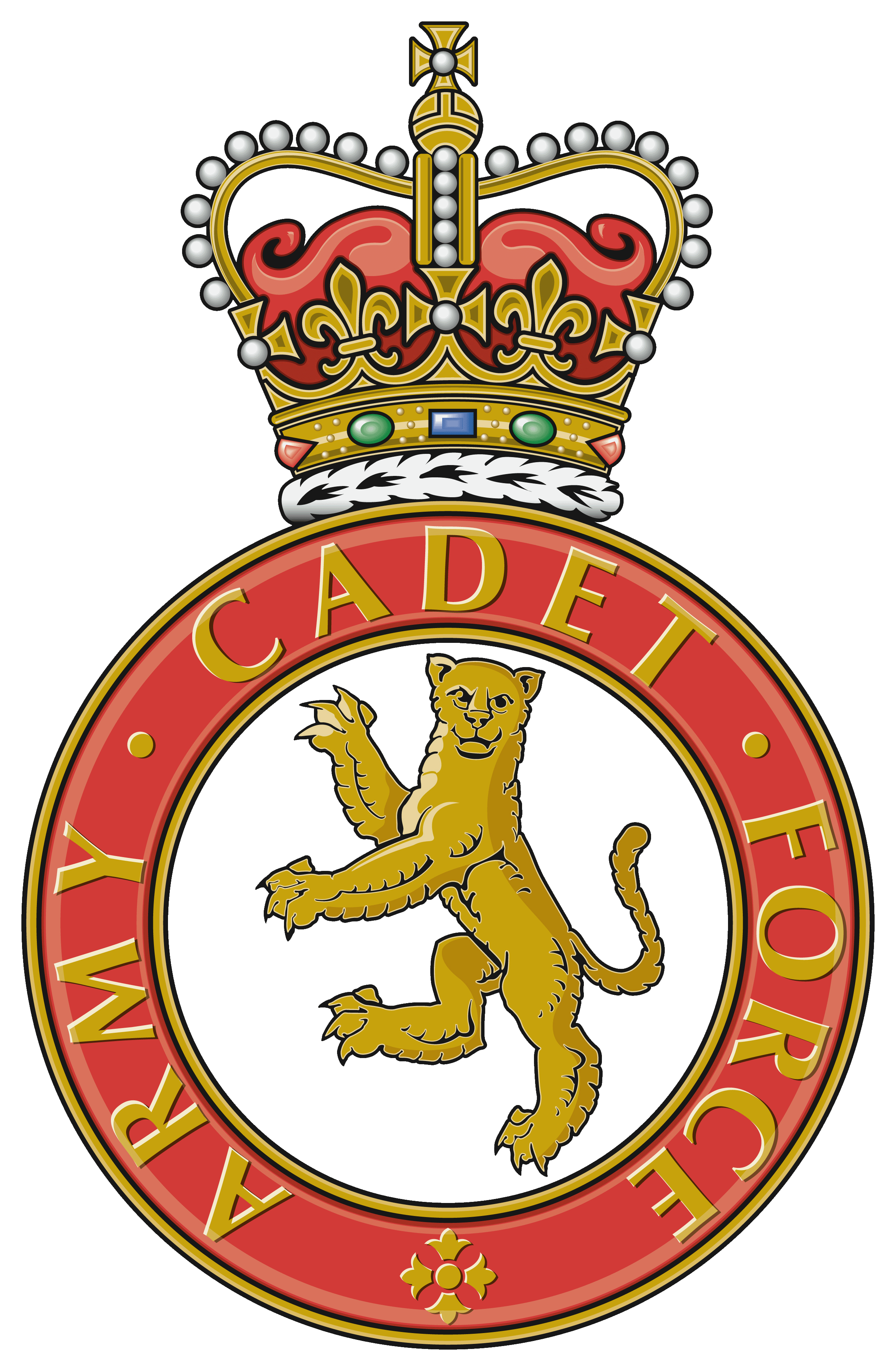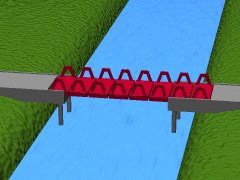|
Fort Luton
Fort Luton was built between 1876 and 1892 south of Chatham, Medway, South East England. It is one of the five late Victorian land front forts built to defend the overland approaches to Chatham. It is the smallest of the Chatham forts and was built near to the village of Luton. Construction and purpose The fort was ordered under the auspices of the 1859/60 Royal Commission on the Defences of the United Kingdom, but it was deleted by Parliament in an attempt to save money and divert funds to the construction of the sea forts, and the Land Front Forts of Milford Haven, Plymouth, Cork and Portsmouth/ Isle of Wight Fortresses. The 1869 'Report on the Construction Condition and Costs of Fortification' criticised the lack of landward protection for Chatham, yet it was not until 1872 that the Treasury relented and the land was purchased. Even so, it was not until 1876 that the order was given by the War Office, after approval by Parliament for construction to commence. The original de ... [...More Info...] [...Related Items...] OR: [Wikipedia] [Google] [Baidu] |
Chatham, Medway
Chatham ( ) is a town located within the Medway unitary authority in the ceremonial county of Kent, England. The town forms a conurbation with neighbouring towns Gillingham, Rochester, Strood and Rainham. The town developed around Chatham Dockyard and several Army barracks, together with 19th-century forts which provided a defensive shield for the dockyard. The Corps of Royal Engineers is still based in Chatham at Brompton Barracks. The Dockyard closed in 1984, but the remaining major naval buildings are an attraction for a flourishing tourist industry. Following closure, part of the site was developed as a commercial port, other parts were redeveloped for business and residential use, and part was used as the Chatham Historic Dockyard museum. Its attractions include the submarine . The town has important road links and the railway and bus stations are the main interchanges for the area. It is the administrative headquarters of Medway unitary authority, as well as its p ... [...More Info...] [...Related Items...] OR: [Wikipedia] [Google] [Baidu] |
Drawbridge
A drawbridge or draw-bridge is a type of moveable bridge typically at the entrance to a castle or tower surrounded by a moat. In some forms of English, including American English, the word ''drawbridge'' commonly refers to all types of moveable bridges, such as bascule bridges, vertical-lift bridges and swing bridges, but this article concerns the narrower historical definition of the term where the bridge is used in a defensive structure. As used in castles or defensive structures, drawbridges provide access across defensive structures when lowered, but can quickly be raised from within to deny entry to an enemy force. Castle drawbridges Medieval castles were usually defended by a ditch or moat, crossed by a wooden bridge. In early castles the bridge might be designed to be destroyed or removed in the event of an attack, but drawbridges became very common. A typical arrangement would have the drawbridge immediately outside a gatehouse, consisting of a wooden deck wit ... [...More Info...] [...Related Items...] OR: [Wikipedia] [Google] [Baidu] |
Forts In Medway
A fortification is a military construction or building designed for the defense of territories in warfare, and is also used to establish rule in a region during peacetime. The term is derived from Latin ''fortis'' ("strong") and ''facere'' ("to make"). From very early history to modern times, defensive walls have often been necessary for cities to survive in an ever-changing world of invasion and conquest. Some settlements in the Indus Valley civilization were the first small cities to be fortified. In ancient Greece, large stone walls had been built in Mycenaean Greece, such as the ancient site of Mycenae (famous for the huge stone blocks of its 'cyclopean' walls). A Greek '' phrourion'' was a fortified collection of buildings used as a military garrison, and is the equivalent of the Roman castellum or English fortress. These constructions mainly served the purpose of a watch tower, to guard certain roads, passes, and borders. Though smaller than a real fortress, they acted ... [...More Info...] [...Related Items...] OR: [Wikipedia] [Google] [Baidu] |
Palmerston Forts
The Palmerston Forts are a group of forts and associated structures around the coasts of the United Kingdom and Ireland. The forts were built during the Victorian period on the recommendations of the 1860 Royal Commission on the Defence of the United Kingdom, prompted by concerns about the strength of the French Navy, and strenuous debate in Parliament about whether the cost could be justified. The name comes from their association with Lord Palmerston, who was Prime Minister at the time and promoted the idea. The works were also known as Palmerston's Follies, partly because the first ones which were around Portsmouth, had their main armament facing inland to protect Portsmouth from a land-based attack, and thus (as it appeared to some) facing the wrong way to defend from a French attack. The name also derived from the use of the term "folly" to indicate " a costly ornamental building with no practical value". They were criticized because at the time of their completion, the ... [...More Info...] [...Related Items...] OR: [Wikipedia] [Google] [Baidu] |
Community Interest Company
A community interest company (CIC, colloquially pronounced "kick") is a type of company introduced by the United Kingdom government in 2005 under the Companies (Audit, Investigations and Community Enterprise) Act 2004, designed for social enterprises that want to use their profits and assets for the public good. CICs are intended to be easy to establish, with all the flexibility and certainty of the company form, but with some special features to ensure they are working for the benefit of the community. They are overseen by the Regulator of Community Interest Companies. CICs have proved popular and some 10,000 were registered in the status's first ten years. Objectives A community interest company is a business with primarily social objectives whose surpluses are principally reinvested for that purpose in the business or the community, rather than being driven by the need to maximize profit for shareholders and owners. CICs tackle a wide range of social and environmental issu ... [...More Info...] [...Related Items...] OR: [Wikipedia] [Google] [Baidu] |
Scheduled Monument
In the United Kingdom, a scheduled monument is a nationally important archaeological site or historic building, given protection against unauthorised change. The various pieces of legislation that legally protect heritage assets from damage and destruction are grouped under the term "designation." The protection provided to scheduled monuments is given under the Ancient Monuments and Archaeological Areas Act 1979, which is a different law from that used for listed buildings (which fall within the town and country planning system). A heritage asset is a part of the historic environment that is valued because of its historic, archaeological, architectural or artistic interest. Only some of these are judged to be important enough to have extra legal protection through designation. There are about 20,000 scheduled monuments in England representing about 37,000 heritage assets. Of the tens of thousands of scheduled monuments in the UK, most are inconspicuous archaeological sites, but ... [...More Info...] [...Related Items...] OR: [Wikipedia] [Google] [Baidu] |
Kent County Council
Kent County Council is a county council that governs most of the county of Kent in England. It is the upper tier of elected local government, below which are 12 district councils, and around 300 town and parish councils. The county council has 81 elected councillors. The chief executive and chief officers are responsible for the day-to-day running of the council. Roger Gough is the leader of the council as of October 2019. Kent County Council is currently controlled by the Conservative Party with 61 seats. The Labour Party have 7 seats. It is one of the largest local authorities in England in terms of population served and the largest local authority of its type.With a population of 1,463,700 at the 2011 census, Kent is the largest non-metropolitan county in a two tier arrangement. In November 2022, the county council stated it, alongside Hampshire County Council, may face bankruptcy within 12 months due to austerity cuts. Responsibilities The council is responsible for p ... [...More Info...] [...Related Items...] OR: [Wikipedia] [Google] [Baidu] |
Army Cadet Force
The Army Cadet Force (ACF), generally shortened to Army Cadets, is a national youth organisation sponsored by the United Kingdom's Ministry of Defence and the British Army. Along with the Sea Cadet Corps and the Air Training Corps, the ACF make up the Community Cadet Forces. It is a separate organisation from the Combined Cadet Force which provides similar training within principally independent schools. Although sponsored by the Ministry of Defence, the ACF is not part of the British Army, and as such cadets are not subject to military 'call up'. Some cadets do, however, go on to enlist in the armed forces later in life, and many of the organisation's leaders have been cadets or have a military background. The Army Cadet Force Association (ACFA) is a registered charity that acts in an advisory role to the Ministry of Defence and other Government bodies on matters connected with the ACF. The Army Cadets is also a member of The National Council for Voluntary Youth Services ( ... [...More Info...] [...Related Items...] OR: [Wikipedia] [Google] [Baidu] |
I-beam
An I-beam, also known as H-beam (for universal column, UC), w-beam (for "wide flange"), universal beam (UB), rolled steel joist (RSJ), or double-T (especially in Polish, Bulgarian, Spanish, Italian and German), is a beam with an or -shaped cross-section. The horizontal elements of the are flanges, and the vertical element is the "web". I-beams are usually made of structural steel and are used in construction and civil engineering. The web resists shear forces, while the flanges resist most of the bending moment experienced by the beam. The Euler–Bernoulli beam equation shows that the I-shaped section is a very efficient form for carrying both bending and shear loads in the plane of the web. On the other hand, the cross-section has a reduced capacity in the transverse direction, and is also inefficient in carrying torsion, for which hollow structural sections are often preferred. History The method of producing an I-beam, as rolled from a single piece of wrought i ... [...More Info...] [...Related Items...] OR: [Wikipedia] [Google] [Baidu] |
Concrete
Concrete is a composite material composed of fine and coarse aggregate bonded together with a fluid cement (cement paste) that hardens (cures) over time. Concrete is the second-most-used substance in the world after water, and is the most widely used building material. Its usage worldwide, ton for ton, is twice that of steel, wood, plastics, and aluminum combined. Globally, the ready-mix concrete industry, the largest segment of the concrete market, is projected to exceed $600 billion in revenue by 2025. This widespread use results in a number of environmental impacts. Most notably, the production process for cement produces large volumes of greenhouse gas emissions, leading to net 8% of global emissions. Other environmental concerns include widespread illegal sand mining, impacts on the surrounding environment such as increased surface runoff or urban heat island effect, and potential public health implications from toxic ingredients. Significant research and development i ... [...More Info...] [...Related Items...] OR: [Wikipedia] [Google] [Baidu] |
South East England
South East England is one of the nine official regions of England at the first level of ITL for statistical purposes. It consists of the counties of Buckinghamshire, East Sussex, Hampshire, the Isle of Wight, Kent, Oxfordshire, Berkshire, Surrey and West Sussex. Major towns and cities in the region include Brighton and Hove, Milton Keynes, Southampton, Portsmouth, Slough, Reading and Oxford. South East England is the third largest region of England, with an area of 19,096 km2 (7,373 sq mi), and is also the most populous with a total population of over eight and a half million (2011). The region contains seven legally chartered cities: Brighton and Hove, Canterbury, Chichester, Oxford, Portsmouth, Southampton and Winchester. The region's close proximity to London and connections to several national motorways have led to South East England becoming a prosperous economic hub with the largest economy of any region in the UK, after London. The region is home to Gat ... [...More Info...] [...Related Items...] OR: [Wikipedia] [Google] [Baidu] |
The Rolling Bridge
The Rolling Bridge is a type of curling moveable bridge completed in 2004 as part of the Grand Union Canal office and retail development project at Paddington Basin, London. Design The Rolling Bridge was conceived by Thomas Heatherwick. It consists of eight triangular sections hinged at the walkway level and connected above by two-part links that can be collapsed towards the deck by hydraulic cylinders mounted vertically between the sections. When extended, it resembles a conventional steel and timber footbridge, and is 12 metres long. To allow the passage of boats, the hydraulic pistons are activated and the bridge curls up until its two ends join, to form an octagonal shape measuring one half of the waterway's width at that point. The bridge won the British Constructional Steelwork Association's British Structural Steel Design Award. "Rolling" as a name and as a type Traditional use of the term "rolling bridge" dates from at least the Victorian era, and is used to desc ... [...More Info...] [...Related Items...] OR: [Wikipedia] [Google] [Baidu] |








